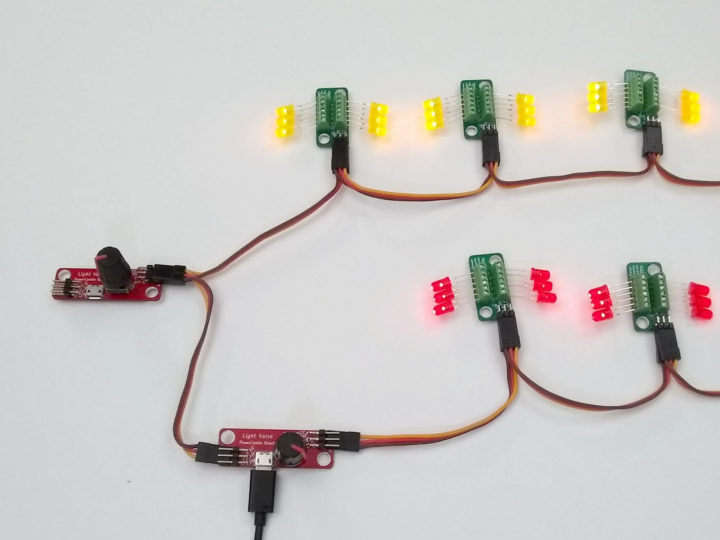The Ditto and Light Valve can precisely adjust and fade LED’s with a smooth, full range of dimming. Smooth dimming is important when performed in front of an audience. A noisy dimmer or non-smooth turning dial can take onlookers out of the moment and lose that vital immersive experience while portraying a story.
The usage of boards is explained in two parts.
- Part 1 covers the basics for small-scale projects
- Part 2 describes unique expansion capabilities with more of the same boards
We will cover the basics as simply as possible
Not like this…
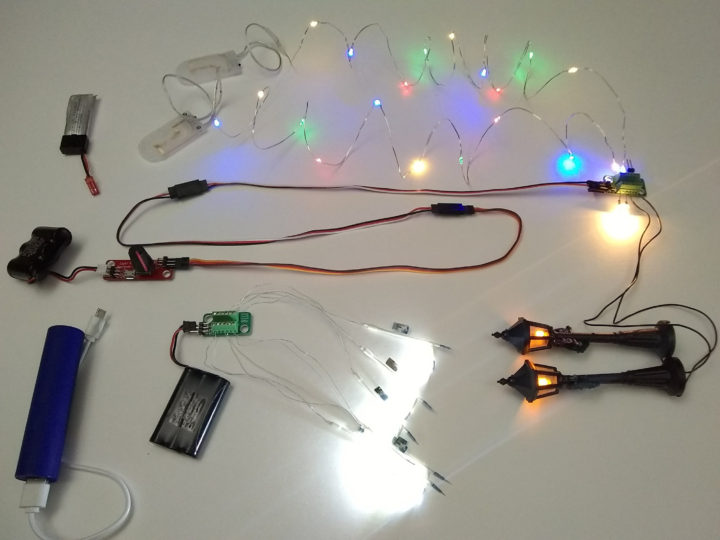 There is a huge assortment of LED’s and power sources that can be connected to the Ditto and Light Valve, but we aren’t going to go there. We’ll also avoid the project’s plastic and other materials so as to reveal wiring clearly.
There is a huge assortment of LED’s and power sources that can be connected to the Ditto and Light Valve, but we aren’t going to go there. We’ll also avoid the project’s plastic and other materials so as to reveal wiring clearly.
More like this…
Starting simple, a Ditto by itself works at full brightness
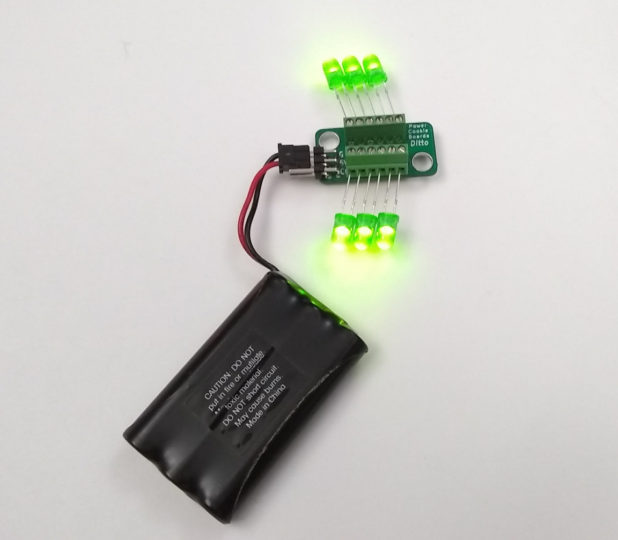
A rechargeable battery pack with three AAA batteries is supplying power through the G/5V/CC connector. The Chained Control pin, CC is not used, so the Ditto runs at full brightness. At that brightness, one board will operate for 8 hours to many times that with six LED’s, the duration depending on the type of LED’s and what amount of the slowly decreasing brightness is deemed too little.
A word on durability. Don’t worry about accidentally shorting outputs or reverse polarity on Chaining Cables, LED’s or battery packs on these two boards. No damage is done, so reconnect and try again.
Next, the other board operating alone.
A Light Valve by itself can dim a single LED.
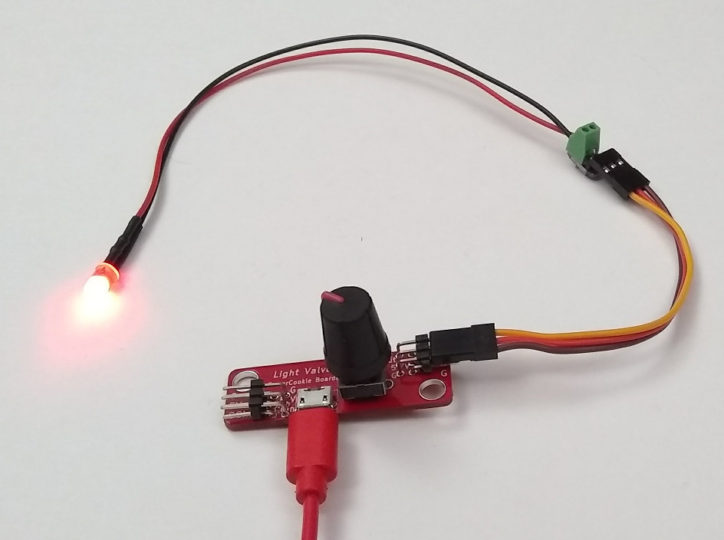
The knob sooo smoothly sets brightness.
Aside from power sharing pins, The Light Valve’s sole output is the chained control signal CCout, containing the brightness level that is normally only shared with other boards. But the CCout pin is actually an LED Port and works the same as ports on the Ditto and Morsel, meaning all the same LED’s can be connected to it.
The small green connector on the Coupler provides the screw terminals for the LED. The LED’s red wire connects to 5V, black to CCout. The other side of the Coupler accepts a cable.
Bare LED’s are at risk since you can make a wiring error that connects G and 5V directly to the LED and burn it out. The green connectors of the Ditto and Morsel have no such risk.
To connect another board, we must first disconnect the LED since it may draw too much power from the chained control signal CCout.
This small system may be all you need: One Light Valve and one Ditto.
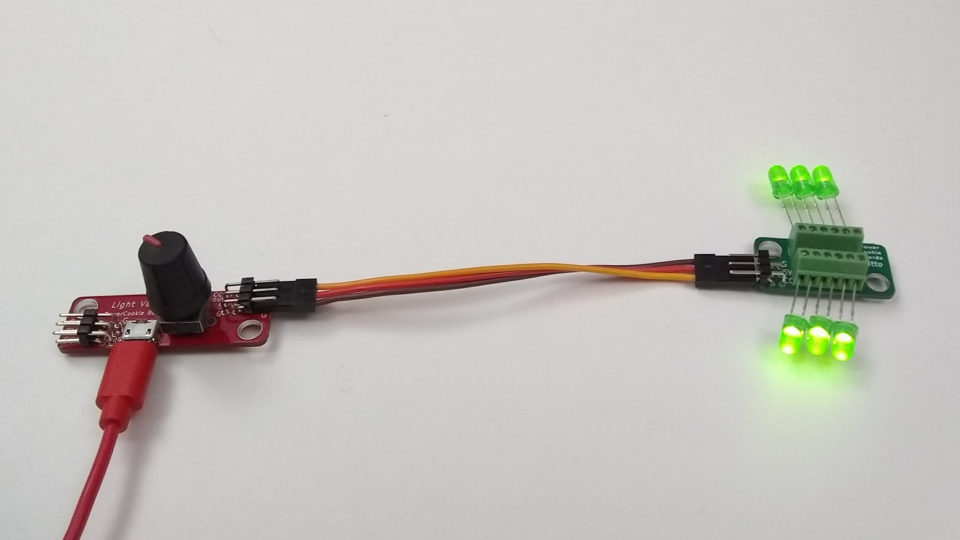
The boards are connected together with a Chaining Cable. The Light Valve controls the brightness of all the green LED’s.
With the board’s G/5V/CC connector facing you, the G pin, ground is always on the left. The Chaining Cable’s dark wire has been connected to this pin on both boards.
Notice that the USB cable is inserted upside-down compared to cellphones.
Summary
We have described how two boards can be used. When used together, they provide a cost-effective way to control six LED’s with a smooth, full range of dimming.
Dimming can be used to set a desired brightness or to create a dramatic effect that helps tell a story, by fading up the lights to focus attention, then fading them out.
Next: Ditto and Light Valve (Part 2 of 2): Larger Projects
Click to continue

